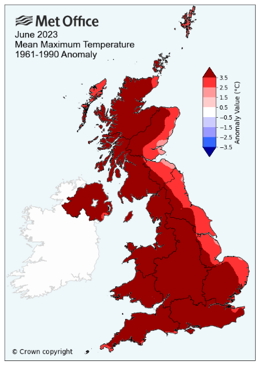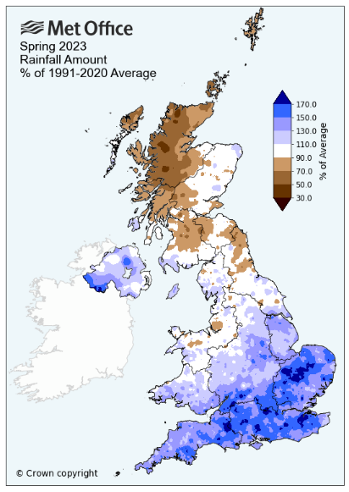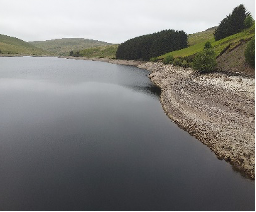Water, wastewater and drainage policy: consultation
This consultation seeks your views on our proposed principles and considerations in developing policy for the future of the water industry in Scotland in response to the climate emergency.
1. Introduction & Background
1.1 Overview
This document sets out the Scottish Government’s proposed strategic principles, and considerations in developing policy for the future of the water industry in Scotland in response to the climate emergency. Water is a precious resource – it is essential for life and for Scotland. It supports our lives, agriculture and businesses and supports our environment. 'Our aim is to help protect Scotland’s environment and water resources so we can all continue to rely on them for generations to come.'
1.2 Why your views matter
Your views will inform the development of policy for the future of the Scottish water industry and how it can respond to the impacts of the climate emergency. The policy proposals are designed to protect our water, wastewater and drainage services; better prepare for the impacts of climate change on these services; and, maximise the benefits that we can deliver for the people of Scotland.
1.3 Changing climate
Climate induced events both at home and around the world this summer and autumn are a stark reminder we are in the middle of a climate crisis – it is not in the future or somewhere on the horizon, it’s happening now.


We are seeing extremes in temperatures and rainfall events that indicate a worrying trend. Temperatures in Scotland have risen over the past few decades, resulting in drier summers and associated deterioration in the quality of the water abstracted for drinking water. Shifting rainfall patterns are leading to more intense and shorter periods of heavy rain. Winters will become milder and wetter. Sea levels are expected to rise, adversely impacting vital infrastructure located on or near the coast.
10 of the warmest years on record have occurred since 1997. The average temperature in the last decade (2010-2019) was around 0.7°C warmer than the 1961-1990 average. In June 2023 temperatures across the UK were higher than normal and parts of western Scotland were more than 4°C warmer compared to the average for 1961-1990[1].
The Met Office’s UK Climate Projections predict warmer, wetter winters, and drier summers. There has been an increase in winter rainfall over Scotland in the past few decades. The average year in the last decade (2010-2019) was 9% wetter than the 1961-1990 average. We will experience rainfall volumes during more intense storms that will likely lead to localised flooding and damage to infrastructure.
This summer, the equivalent of 10 days of rain fell in an hour at Hampden Park on 20 June 2023. Just weeks before this happened, we saw those living in Broadford being impacted by a dry period resulting in emergency supply measures being taken to ensure they had enough drinking water.


The health of Scotland’s economy, society and environment is increasingly reliant on how effectively we respond to the impacts of climate change. As the climate continues to shift, life in Scotland may look different to how it looks today. The demand for water will continue to grow as the weather gets warmer and this will affect many aspects of our lives including our crop management and food supply. There will also be pressure on our drinking water supply, affecting not only the amount of water available but also the quality of the water that we take from the environment to use for drinking water.
As the intensity of storms increases, so does the risk of flooding in people’s homes, businesses and other essential services which will impact the way we live. As we have described above the climate has already changed. We need to adapt the way in which we plan, deliver and use our essential water, wastewater and drainage services to cope with these changes now. This will ensure that our environment is protected, drinking water is secured and rainwater is managed in a way that reduces the impact on society for future generations.
To protect lives and livelihoods, we need to give the people of Scotland the tools they need to prepare for – and adapt to – the growing impacts of climate change.
1.4 Scotland’s approach to adapting to climate change
In March 2022 the Climate Change Committee (CCC) set out a series of recommendations in its independent assessment “CCC-Is-Scotland-climate-ready-Recommendations.pdf">Is Scotland climate ready? 2022 Report to Scottish Parliament Recommendations (theccc.org.uk)”. In this report the CCC identified key areas where Scotland could make improvements as to how it could better adapt to climate change. For the water industry it recommended the need to remove rainwater (often referred to as surface water) from sewers. It also recommended the need to become more efficient with the water that we use every day and the amounts that we lose through leaking pipes. Another recommendation asked that we look at the impacts of water scarcity, particularly for those who use small burns and streams for their drinking water, which are not part of Scotland’s wider public water supply, and are more likely to dry up.
The CCC also provided evidence for the UK Climate Change Risk Assessment (UKCCRA) (2022) which details the key climate risks facing Scotland now and in the future. This includes risks to businesses from water scarcity and flooding, risks to health from poorer water quality and availability, risks to water infrastructure and public water supplies. The Climate Change (Scotland) Act 2009 stipulates that Scottish Ministers must set out a programme to respond to these risks through a Climate Adaptation Plan which is currently in its second iteration (Climate Ready Scotland: climate change adaptation programme 2019-2024 - gov.scot (www.gov.scot)).
In this consultation document we have considered how we address the risks highlighted and recommendations made by the CCC. These are set out as choices that Scotland needs to consider in adapting to the impacts of climate change. The choices weigh up the advantages and disadvantages of acting now versus later. They also consider the impacts of changing behaviours compared to the cost of building new structures and facilities such as reservoirs, bigger sewers and drains so that we can continue to use water services in the way that we do today.
The principles also seek to support the aims of the Circular Economy Bill, in a drive to reduce our impact on Scotland’s resources, providing opportunities to promote the economy. Within the water industry we can do this by generating energy, recovering resources from wastewater, reducing chemical use, managing rainwater separately and using water wisely. In addition to setting out the changes required to be made by the water industry we also need to support the people of Scotland to play their part in taking care of the water resources upon which we depend.
We will also be consulting on a new Scottish National Adaptation Plan early next year. This will set out a wider response to the risks set out in the UKCCRA across the natural, coastal and marine environments, communities, public services and businesses.
Contact
Email: waterindustry@gov.scot
There is a problem
Thanks for your feedback